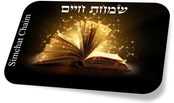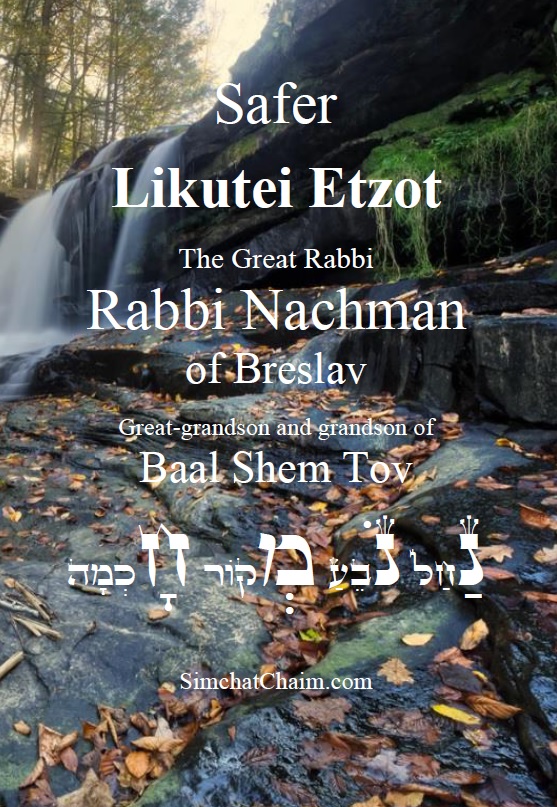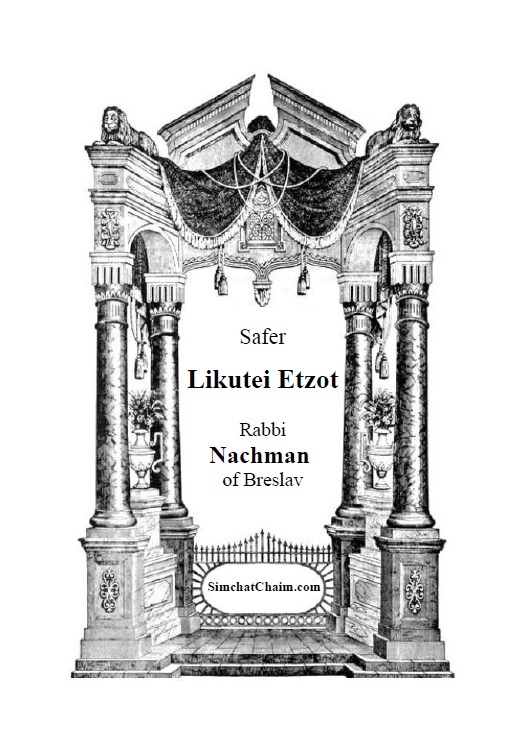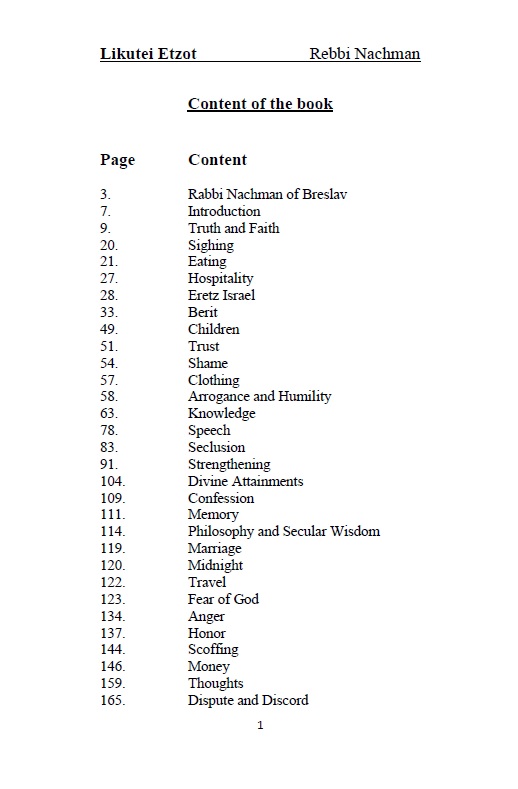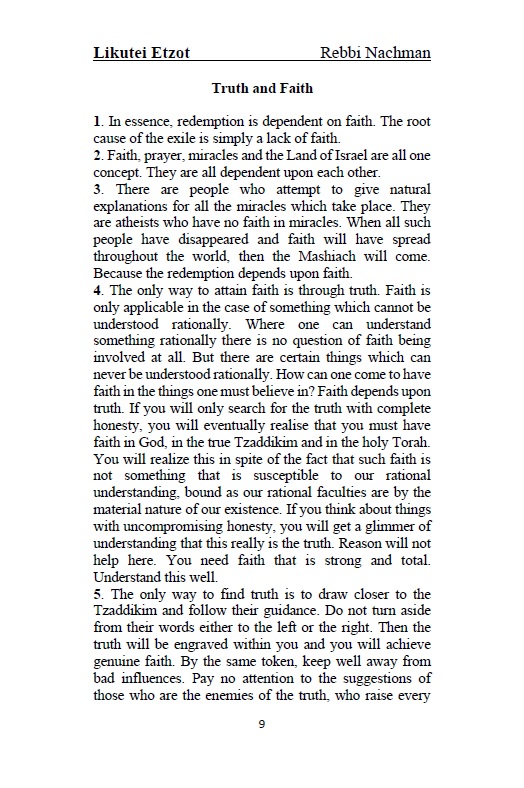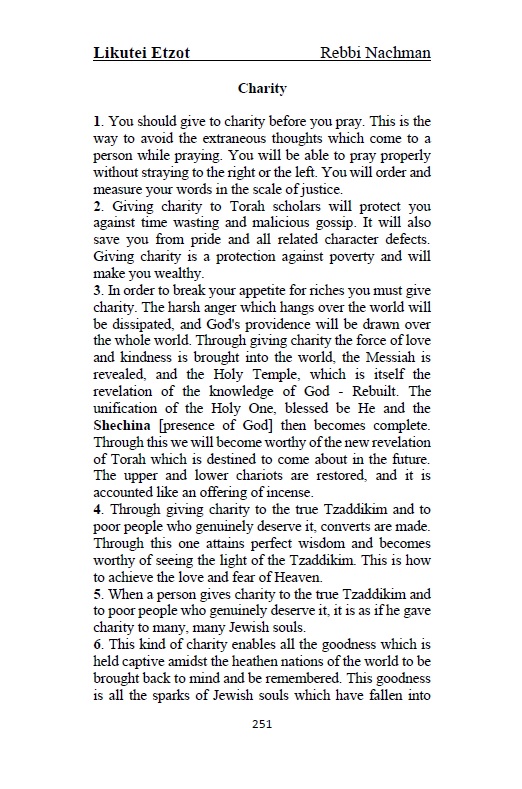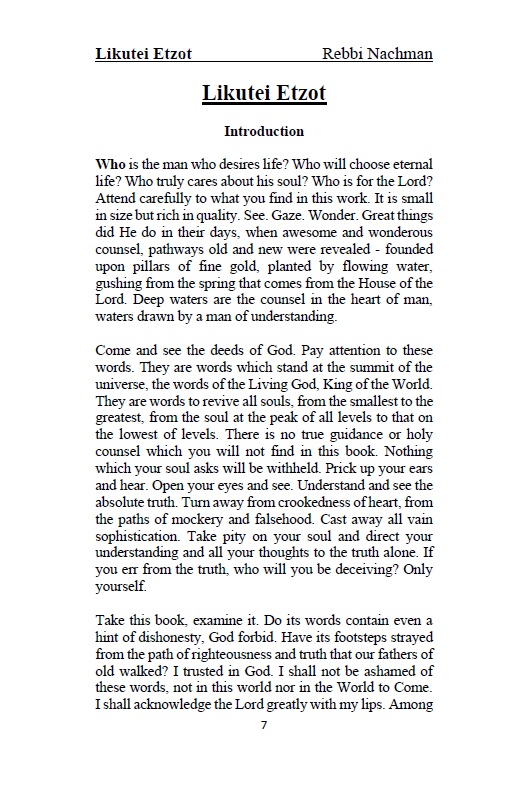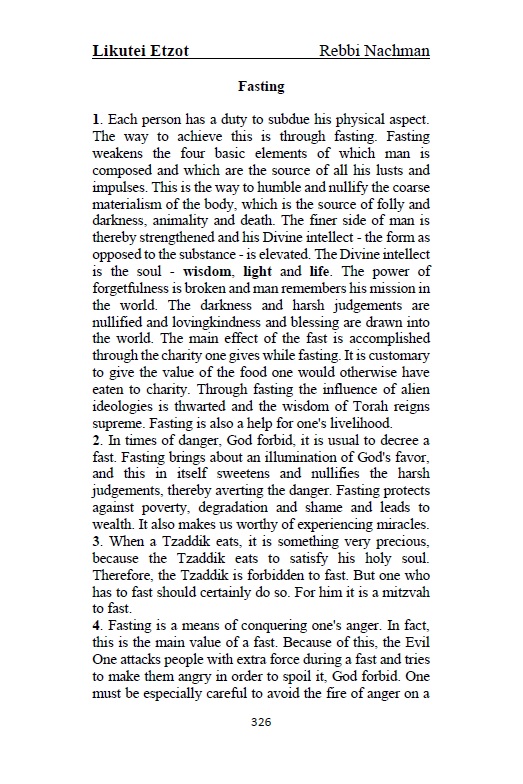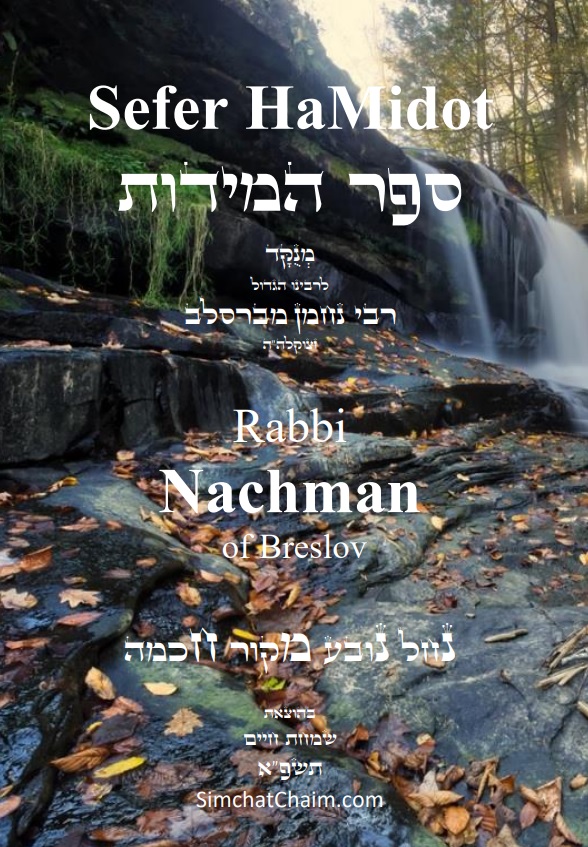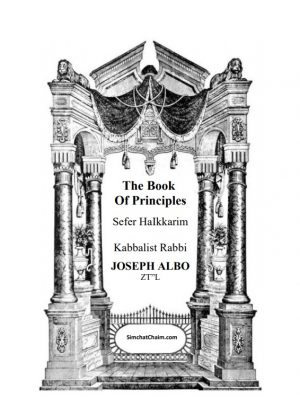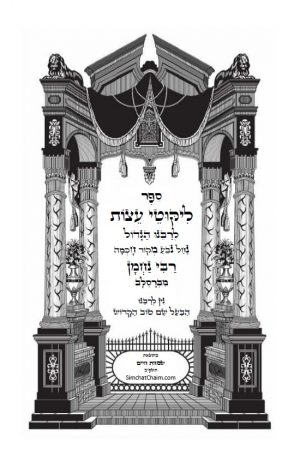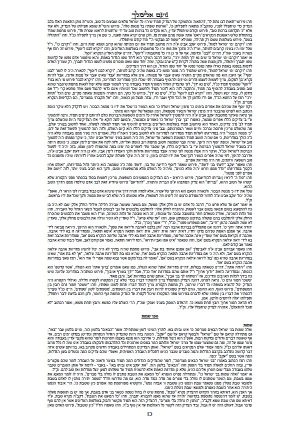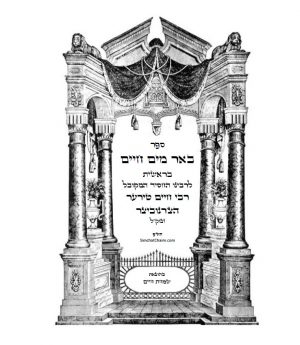Sefer
Likutei Etzot
Rabbi
Nachman of Breslav
Rabbi Nachman of Breslav [Was born 1st of Nisan, April 4, 1772 – Deceased 18th of Tishri, October 16th, 1810] was the founder of Hasidism in Breslav and its only rebbe. Rabbi Nachman was an original spiritual teacher who emphasized the many obstacles on the way to knowing God and the importance of joy, simple faith, and innocence, as well as attachment to the righteous and in particular the – True righteous. He often protested what he saw as the institutionalization and loss of the path of Hasidism and got into serious disputes with other rebbes, due to the originality and difference in the way he founded, as well as regarding his claim that he alone is the – Truthful tzaddik.
His most prominent student, Rabbi Natan of Breslav, compiled according to his words the Moharan Collections and other fundamental books of Hasidism. Since he did not appoint a successor, Breslav Hasidism continued to function as a movement with teachers who were well versed in Rabbi Nachman’s Torah even after his death, and not as a court headed by a line of rebbes.
During his lifetime, Rabbi Nachman stirred up a storm and strong opposition, and Hasidism in Breslav was a small and persecuted group until it gained interest and revival in the second half of the 20th century. Its followers today number tens of thousands, many of them repenting.
Born in the town of Mzyboz in the Podolia region, in the Polish-Lithuanian Union [today in Ukraine]. During his time, Poland was partitioned, and the surrounding territories were handed over to Imperial Russia. His mother, Paige, was the daughter of Adele, the daughter of Baal Shem Tov. His father, Simcha, was the son of Rabbi Nachman of Hordenka, one of the close disciples of the holy Baal Shem Tov, and named his son after him.
Raised in a Hassidic-Kabbalic atmosphere. From his youth he spent a lot of time in solitude, fasting and praying for many hours. He married at the age of 13 to Sashia, Ephraim’s daughter.
He had no distinct rabbi, although he cites conversations with his grandfather from Horodenka. He learned most of his Torah independently, under the influence of the leaders of the Hasidic movement who would come to visit the grave of his great-grandmother, the Baal Shem Tov, in Mezhiboz. His uncles Rabbi Ephraim of Dilikov and Rabbi Baruch of Mezhibozh had a great influence on him. Rabbi Baruch recognized him for the first time as worthy of being a Rabbi for Hasidim.
In 1790, he moved to the village of Medvedivka near the city of Chihirin, where he began to receive a regular salary as rebbe of a group of Hassidim that gathered around him, and for the first time began to be known among the Hasidic leaders of his generation as an important personality. During this period, his first disputes with other rebbes began. He lived in Medvedivka until 1798.
In Breslav he was joined by most of his famous students, including Rabbi Natan Sternherz of Mimirov, who became near our days. The name of the city has been immortalized in the name of Hasidism ever since. During this period his followers used to come to him in Breslav on three holidays – Rosh Hashanah, Hanukkah, and Shavuot. He used to travel to his followers on three other holidays – on Shabbat Shira, and on Shabbat Nehamo. He would travel to his followers in Chihirin in eastern Ukraine, and one Saturday every winter he would travel to his followers in Turgovitsa in eastern Podolia. His eight years of sitting in Breslav were the most fruitful and in them, he delivered most of his sermons, talks, and works that were published.
In his last years, Rabbi Nachman suffered from various illnesses. In 1808 he reached the city of Lviv to find a cure and stayed there alone for about eight months, but the doctors could not help him. In A. Bayer, another disaster befell him – his house and the house of his seminary in Breslav were completely burned down. At the same time, the news arrived about approval to lease a house in Uman, so he went to Uman and started living there on the 5th of Iyar. Several years earlier, while passing through the city, he learned the story of the massacre carried out there by the Heidemaks in 1768, in which thousands of Jews were killed. He told his disciples that he wanted to be buried there.
The rabbi passed away in the city of Oman in Tishrei, at the age of 38. He was buried in the city’s old cemetery.
His burial place is a place where thousands of Hasidic and just Jews gather there, who come to pray, especially every Rosh Hashanah.
Product details
- ASIN : B0BW23BY2Z
- Publisher : simchatchaim.com
- Language : English
- Paperback : 342 pages
- ISBN-13 : 979-8378317233
- Item Weight : 1.29 pounds
- Dimensions : 6 x 0.86 x 9 inches
